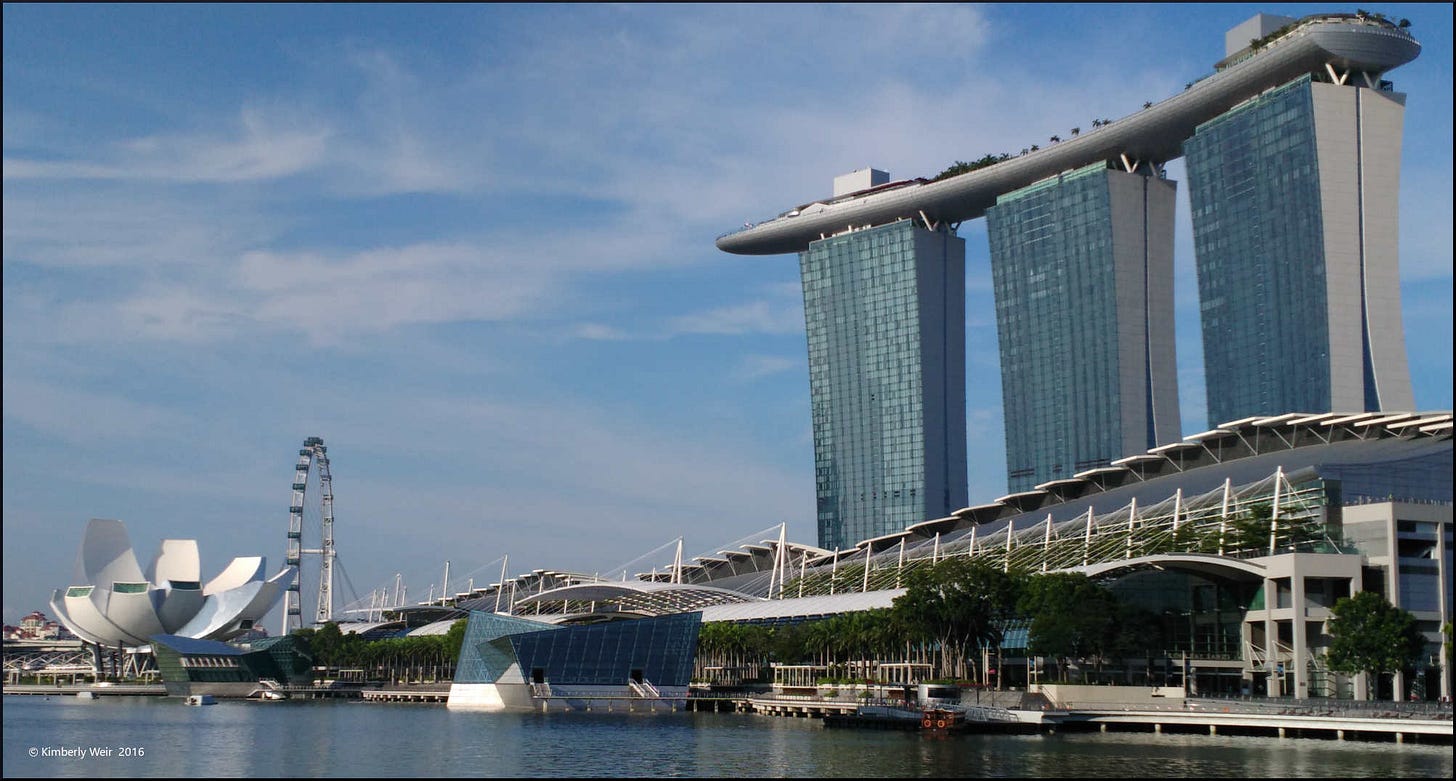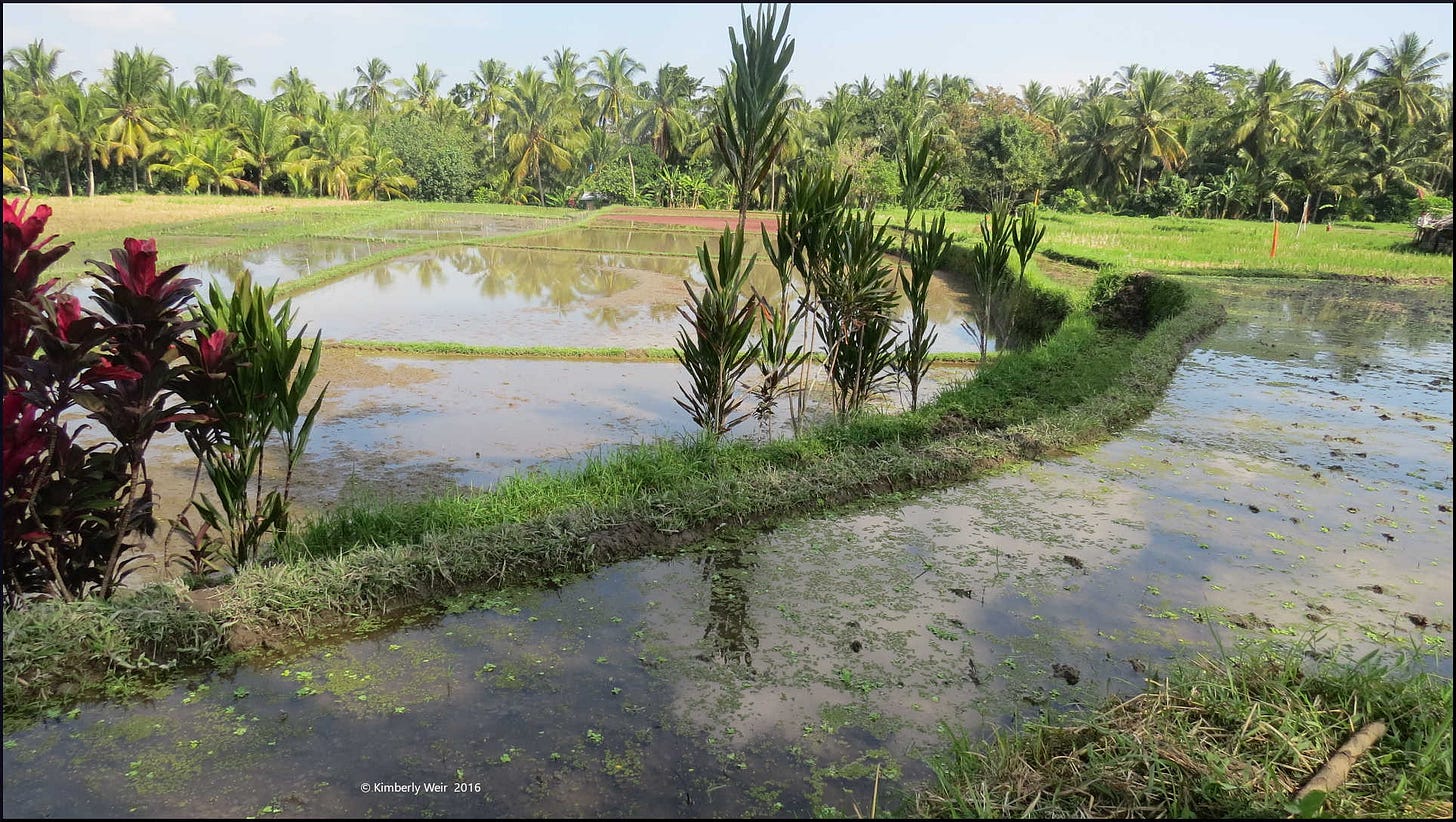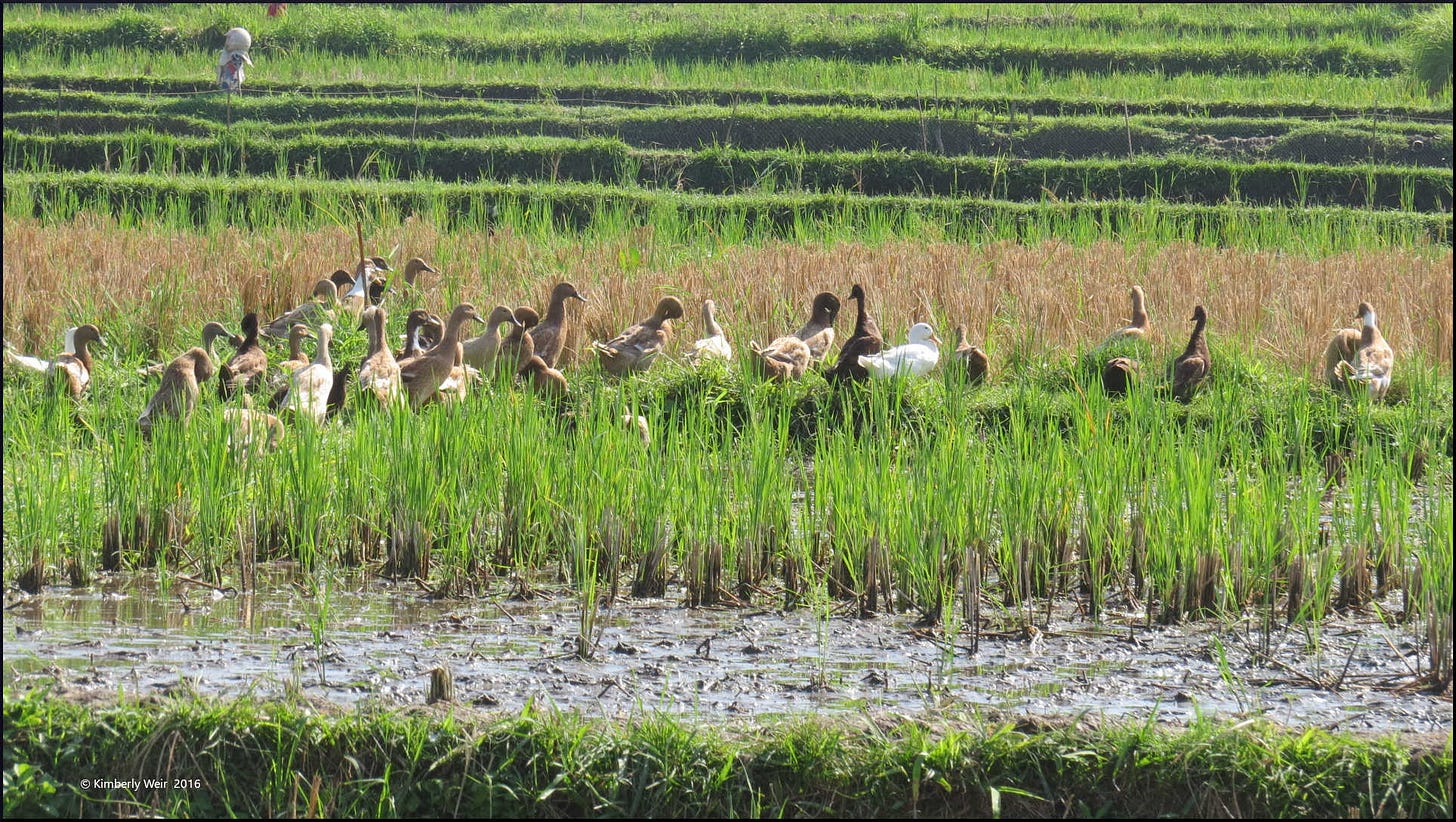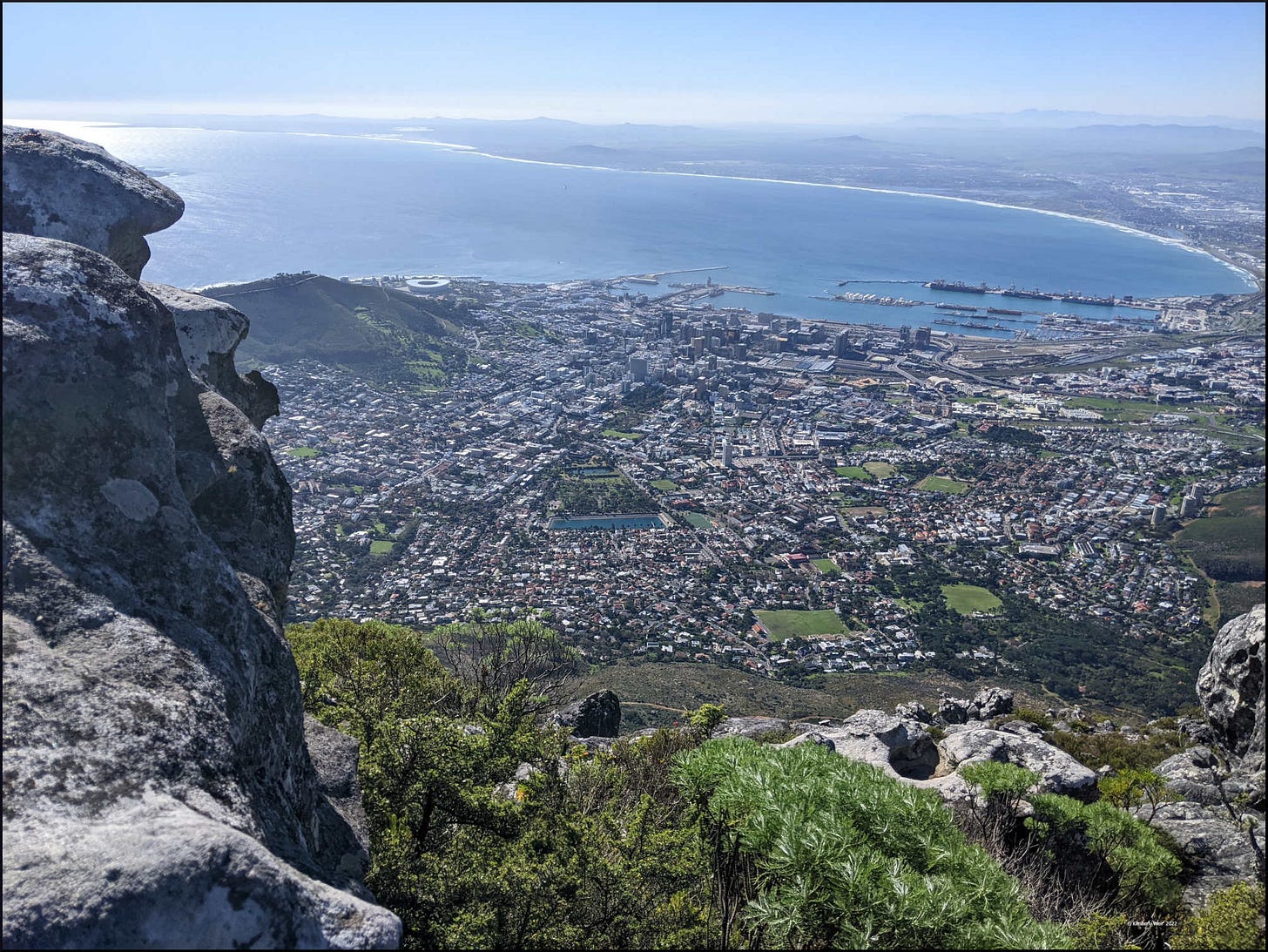Keeping Freshwater Flowing
Freshwater conservation efforts range from Bali’s traditional aquatic subaks, Singapore’s cutting-edge treatment facilities, and Hawaii’s alternative greywater policy, to easy things we can do.
A trip to the Greater Cincinnati Water Works might not sound like the most riveting experience, but each time I took students, they were surprised by just how interesting a water treatment facility could be. Piped in from the Ohio River, the water goes through six separate tanks, using sand, two types of carbon to filter out sediment, lime and sulfuric acid to adjust the pH level, chlorine, and ultraviolet light. The latter was introduced after a cryptosporidium outbreak in early 1990s, when scientists found that chlorine—which is highly effective at killing off bacteria, viruses, and parasites—wasn’t enough to neutralize the buggers. Having visited St. Petersburg, Russia, at a time when it was struggling to eliminate cryptosporidium from its freshwater supply, I appreciate showering in water that doesn’t require squeezing my eyes and mouth shut to avoid infection.
What always strikes me when visiting the plant is that high-quality treated water goes back into the Ohio River, rather than being piped into city lines. Because the public ‘ick’ response to the idea of ‘toilet-to-tap’—treated sewage waste returned for household use, perfectly potable water goes back into the freshwater stream. Singapore, a minuscule dot of a country, decided it was going to change people’s minds. In 2003, the government initiated its NEWater campaign to get the public on board with drinking ‘reclaimed’ water (much less aversion-inducing).
Concerned with maintaining reliable water supplies, the government set out in the 1970s to develop a reclaimed wastewater facility. In addition, Singapore also engineered rainwater collection, which now accounts for 20% of its freshwater supply, with two-thirds of its land used for ‘catchment’. (I highly recommend watching this video about the process.) A controversial process (which I’ll save for another post), 10% of its freshwater supply comes from desalinating ocean water.

After three decades, scientists advanced membrane technology enough to put the reclaimed wastewater production plant online in 2002. Now with five plants, NEWater provides 30% of the country’s freshwater supply. Despite the huge success of Singapore’s NEWater PR campaign, conquering the public’s repugnant response to toilet-to-tap water, the government doesn’t pipe this water back into homes. Instead, because the quality is so high, the government reserves it for commercial air conditioning and the semiconductor industry, which needs exceptionally pure water to make such tiny chips.
Singapore was uniquely positioned to fund these freshwater projects due to its rapid economic development. Implementing the necessary infrastructure for such sophisticated water treatment technology, rainwater collection, and desalination plants is out of reach of most countries, rich or poor. Water-stressed areas, however, can encourage greywater resourcing. Pressure on freshwater supplies encouraged Hawaii to adopt its Onsite Non-Potable Water Reuse policy in 2009. The state estimated that 50-80% of residential wastewater was greywater.
Collecting greywater requires installing dual-collection pipes that send sewage to the processing plant and water from sinks, showers, tubs, and washing machines to a separate tank to water gardens and yards. Harvesting this water directly for irrigation allows it to bypass the sewage treatment plant, saving a lot of energy and resources to treat water that doesn’t need to be potable. Homeowners have an incentive to capture greywater because freshwater is relatively expensive and some counties offer rebates.
For freshwater conservation, long ago, farmers in Bali created the subak integrated aquaculture system. So integral is this practice to Balinese culture that UNESCO listed it as a World Heritage site in 2012. Dependent on agriculture, farmers protect freshwater sources as they grow rice in water where they raise fish, use ducks to control insects, and string coconut shells along native plant borders to scare away birds. This holistic aquaculture system naturally conserves their water supply, minimizing the need for agricultural chemicals and fish feed that could contaminate the water.
Our Habits
In October (oddly, instead of March 22, on World Water Day), Imagine a Day without Water encourages privileged people to get a sense of how much they rely on-and often take for granted—clean, readily available water. Over 80% of countries in the world struggle to provide reliable sources of potable water. Several areas are amongst the highest water-stressed areas, including the Indian subcontinent, southern Africa, and the band of countries that runs across North Africa and the Middle East.
One of the wealthiest parts of South Africa, Cape Town faced unprecedented freshwater shortages in 2021. Reserves were so depleted that the Western Cape region verged on ‘Day Zero’ when it would have to shut off taps due to dried-up reservoirs. Barely averting total shutdown, policies put into place during the crisis continue. Public taps are turned down to a trickle and signs abound in restaurants, hotels, and homes, reminding users of the premium of this resource.
Traveling in developing countries has made me much more aware of my personal water usage. I’m always delighted when I visit a country where it’s possible to drink the water from the tap, or at least use it to brush my teeth, but that’s rare. I hate buying bottled water, producing more plastic waste in countries already struggling with waste management. Upon returning home, for a few days, I find myself reaching for the bottle of water to rinse, as I’m so conditioned to reach for the water bottle to rinse after I brush my teeth.
Talking about water issues with my students, I surveyed them on whether they turn off the water while they brush their teeth. Most people said they did, a few would bashfully admit that they did not, and others probably said they did, not wanting to admit they didn’t. Then I would show them the stats: Water typically runs at 1.32 gallons per minute, so leaving the tap run for two minutes during tooth brushing would use the equivalent of five 2-liter bottles of soda. Turning off the water while brushing is an easy thing to do to save water.
Easy Things To Do We Might Not Have Considered
Similarly, I asked how many people bought bottled water. I’ve witnessed many-a-student with a single-use bottle sitting on their desktop visibly shrink at this question. Some would protest in self-defense that they refilled the bottle throughout the day, prompting other students to boldly point out that they could buy a reusable bottle to the same end. Over the years, however, the reusable bottles increasingly appeared on desks.
Setting aside the fact that single-use plastic bottles are the second only to cigarette butts as the biggest contributor to plastics polluting the ocean, short of outdated pipes (Flint, Michigan), contaminated freshwater supplies (coal mining areas), or a natural disaster, water directly from a tap in a developed country will invariably be cleaner than water out of a plastic bottle. The obvious pollutant is microplastic particles. The likelihood of additional contaminants is also higher. Since bottled water falls under the purview of the beverage industry, testing is less rigorous than for public water supplies. Overall, tap water is not only purer than bottled water, but also a lot less expensive.
Changes That Would Pay Off, but…
This quick questionnaire calculates water usage. I was delighted to see that our household water usage was considered low. In fact, the biggest hit we took was on dog food! At the same time, I was a bit bummed because there aren’t really any additional simple things I can do to conserve water. However, one thing I really should do that would make a difference is to install a rain barrel for summer watering.
For some people, shorter showers might be non-negotiable. For others, it’s the joy of washing the car in the driveway rather than taking it through the Wash-o-Mat. For me, it’s the rainwater barrel. It isn’t prohibitively expensive and literally refills itself. It should be an easy thing to do. I feel like I should do it. But the logistics of it persistently dog me, so I put it off. Maybe next season.









Eye opening as always! We sure take so many things for granted.